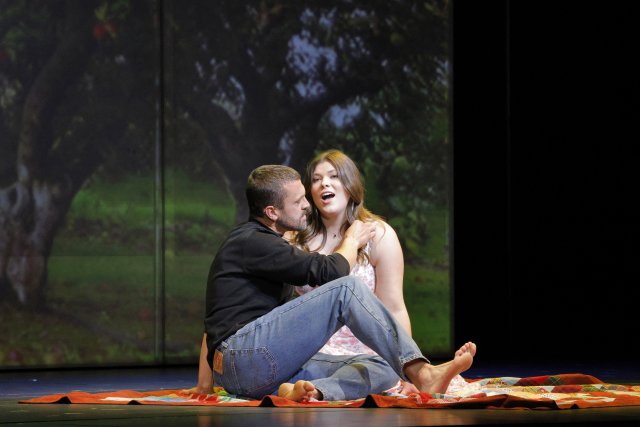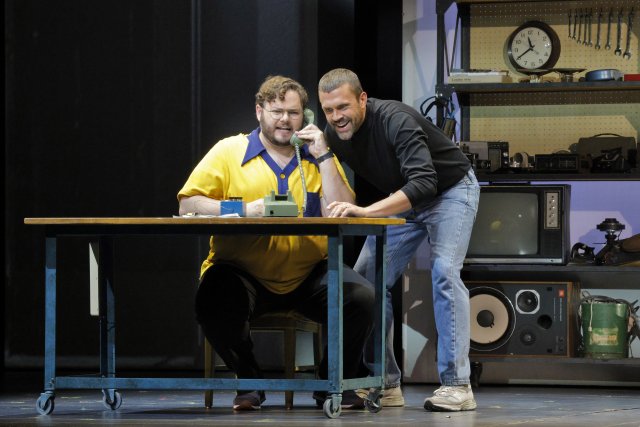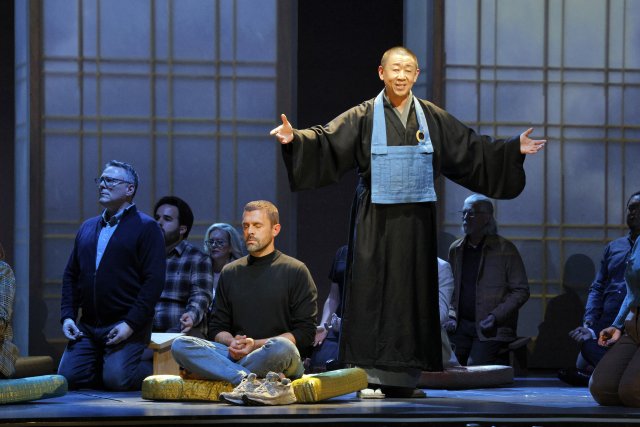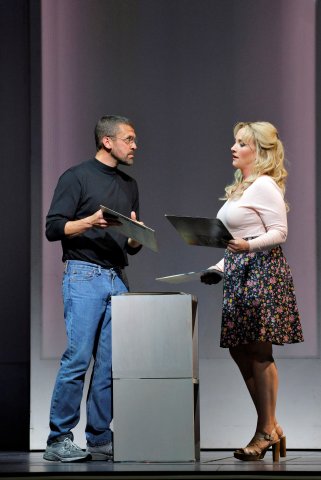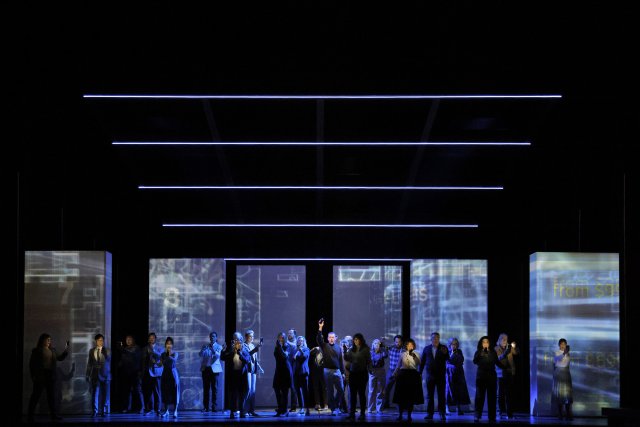The (R)evolution of Steve Jobs
Technology Scores Big in the Storyline and the Score
By: Victor Cordell - Sep 26, 2023
What topic speaks more to the contemporary Bay Area scene than a massive technological success with roots in a garage in the Silicon Valley? But an opera about Apple Computers co-founder Steve Jobs? As it turns out, not only is he an excellent subject for an opera, but composer Mason Bates and librettist Mark Campbell push all the right buttons in creating a masterwork that has already grown legs. And in the skilled hands of San Francisco Opera, the production excites and triumphs on every dimension.
Although co-commissioned by San Francisco Opera, its first production of “The (R)evolution of Steve Jobs” is occurring six years after the world premiere by commissioning partner Santa Fe Opera. The pandemic disrupted San Francisco’s initial scheduling, but meanwhile, stagings by six other opera companies demonstrate the interest in this property.
Jobs would not be the subject of an opera were it not for his accomplishments and fame, but this is not a slavish paean. He is depicted as a man of many contradictions – meditative yet restless; magnetic yet unapproachable; a Buddhist adherent yet emotionally brutal. Above all, he had a single-minded drive for perfection, and his abrasiveness receives emphasis. Among other targets of his perfectionist’s wrath, he repeatedly denigrates employees yelling “Wrong, wrong, wrong!” about everything from color samples to shapes of computer cases.
The composer’s music departs from opera standards but appeals as listenable and curious yet sophisticated. Along with traditional acoustic instrumentation, Bates’ exotic interpretation integrates electronic elements such as key clicking, beeping, and whirring computer sounds which he personally manages on an Apple MacPro from the orchestra pit.
The outcome is lively and often pulsating, with extensive use of percussion including chimes and seven timpani drums. Extending the notion of leitmotifs, each main character has a soundscape, most importantly, steel guitar for Jobs and slow, oceanic harmonies for wife Laurene. Musical highlights occur when these modes overlap and clash, especially in the brief but well-crafted duets and trios.
Most patrons will be familiar with Apple’s successes. The libretto looks at Jobs and Wozniak’s earliest forays into electronics through the iPhone introduction in 2007 as well as with Job’s personal relationships. Rather than telling the story chronologically the libretto is radically non-linear with vignettes from the 1970s until Jobs’ death in 2011. He even kibbitzes his own memorial which he criticizes on numerous grounds.
To Campbell’s great credit, not only do the vignettes work individually and cohere into a whole, but the narrative involves and grips the audience despite any foreknowledge. And the lyrics complement the music nicely, often carrying the driving force that represents the title character. Series of words that create powerful rhythms fleck the score, as when Jobs messianically introduces the iPhone at a conference, noting that it will “communicate, regulate, educate, stimulate….. “. And he regales attendees with its ease of use – “tap to call, tap to read, tap to view, tap for pics…..”.
The cast is superb, starting with John Moore as Steve Jobs. His portrayal as the icon is flawless. His facial look, body type, gesticulations, and emotions are such convincing reflections as to transport the viewer into Jobs’ tempestuous world. And he sings. His warm baritone with rich vibrato suits the role well, but he also conveys Jobs’ rage while retaining vocal acuity. Bille Bruley nicely captures the public perception of Steve Wozniak, the scientific mind behind the early Apple technologies who is submissive to Jobs’ marketing savvy and leadership. A magnificent Sasha Cooke reprises her world premiere role and Grammy award winning performance as Laurene Jobs, the competent and confident wife. Wei Wu as Job’s Buddhist spiritual advisor and Olivia Smith as high school girlfriend Chrisann also excel.
A final star is the staging. Victoria Tzykun’s minimalistic, clean-lines set fits the topic well. In addition to backwall panels, the set designer employs six large, movable modules that define space and act as screens for “59 Productions’s” front-lit projections that always manage to find their mark, no matter the location of the modules. The choreography of the modules provides smooth transition from one scene to the next, while Japhy Weideman’s lighting yields accent and clarity.
Of course, there is more to Jobs’ story than can fit in a 95-minute opera, but a couple of notable items are given short shrift. His firing from Apple is mentioned, but the 12-year interregnum before his return is not developed. And though he rejected paternity of his out-of-wedlock daughter, Lisa, early on, his reconciliation could have been covered. Another significant fact that may have affected Jobs that is not mentioned is that he was adopted at birth. He knew from an early age that he was adopted but always considered the Jobs who raised him as his only parents. He never sought to meet his birth parents, even though he knew their names.
“The (R)evolution of Steve Jobs,” composed by Mason Bates with libretto by Mark Campbell is produced by San Francisco Opera under co-commission with Santa Fe Opera and Seattle Opera, and plays at War Memorial Opera House, 301 Van Ness Ave., San Francisco, CA through October 7, 2023.


